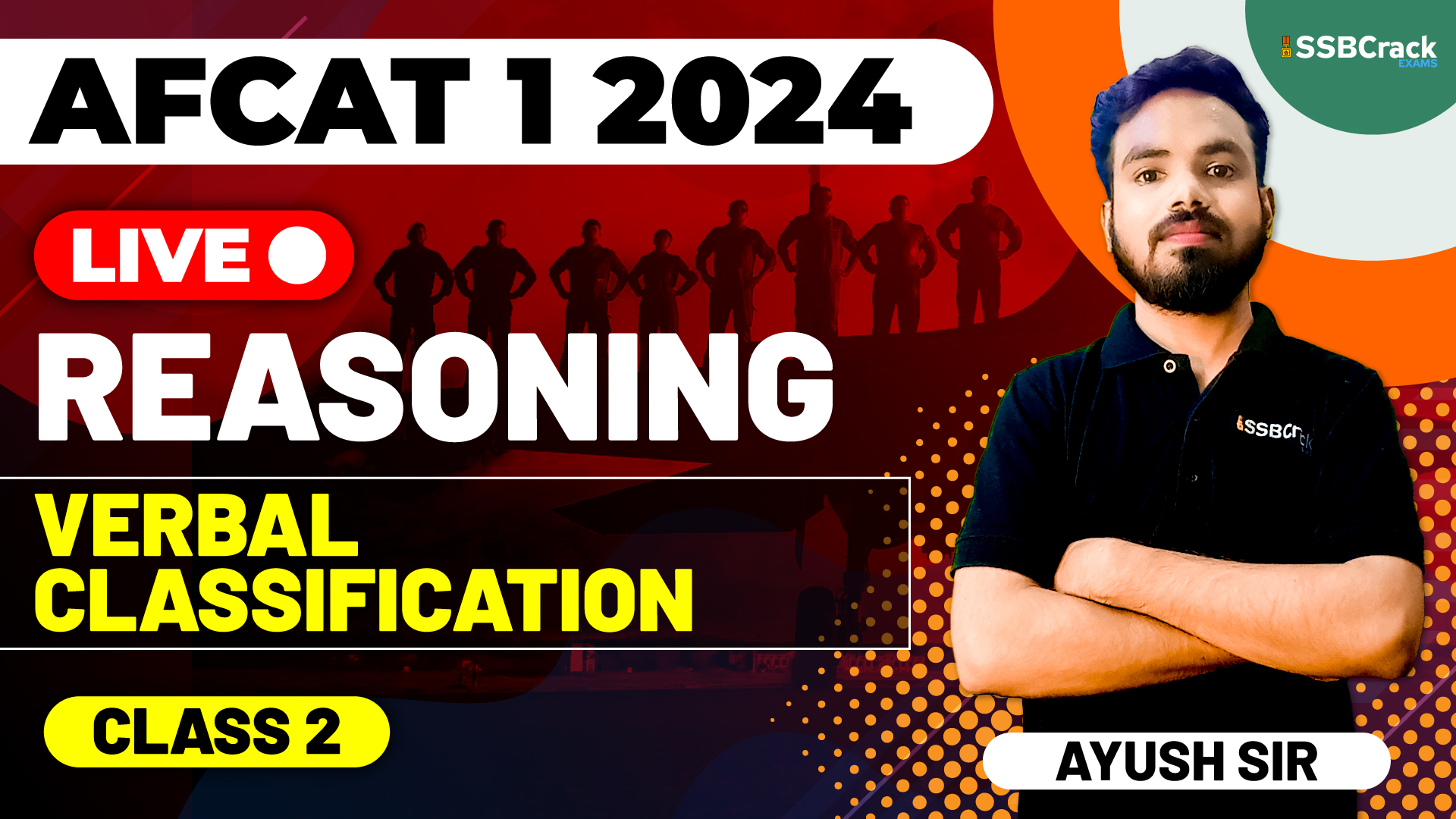The AFCAT (Air Force Common Admission Test) and CDS (Combined Defence Services) exams are renowned for their competitiveness and serve as gateways for those seeking to join the Indian Air Force and other branches of the Indian Armed Forces. In these examinations, the Reasoning section is of paramount importance, and within this section, Verbal Classifications holds a central role. In this article, we will explore the vital concepts of verbal classification, covering its definition, types, and techniques. We will dive into different aspects of classification, including number classification, word classification, and letter classification, while also shedding light on the tricks to excel in these questions. Our aim is to equip you with the knowledge and skills needed to tackle verbal classifications effectively in the AFCAT-CDS 1 2024 Exam.
Understanding Verbal Classification
Verbal classification is a cognitive process that involves categorizing words, numbers, or letters into groups based on shared characteristics or patterns. In the context of the AFCAT and CDS exams, this concept is crucial as it tests a candidate’s ability to recognize relationships and patterns within a set of items and group them accordingly. It is essential to have a firm grasp of verbal classification to perform well in this section.
Definition of Verbal Classification
Verbal classification, also known as word classification, is a logical process that entails organizing a group of words or terms into different categories based on a common attribute or feature. This process examines the candidate’s capacity to identify relationships and patterns within a set of items and group them according to a shared characteristic.
Types of Verbal Classification
Verbal classification questions come in various forms, each requiring a unique approach. Let’s explore the key types of verbal classification questions:
1. Number Classification
Number classification involves categorizing a set of numbers into different groups based on a shared mathematical rule or pattern. Candidates are tasked with identifying the specific relationship or feature that unites the numbers within each group. Let’s delve into a number classification example:
- Example: 16, 25, 49, 64, 121
In this case, the numbers can be classified into two groups: perfect squares (16, 49, 64, 121) and non-perfect squares (25). The common attribute within each group is whether the number is a perfect square or not.
2. Word Classification
Word classification deals with grouping a set of words into categories based on shared linguistic characteristics or meanings. Candidates must identify the common feature that links the words within each group. Here’s an example of word classification:
- Example: Apple, Banana, Orange, Carrot, Potato
In this instance, the words can be divided into two groups: fruits (Apple, Banana, Orange) and vegetables (Carrot, Potato). The common attribute that unites the words is the type of food they represent.
3. Letter Classification
Letter classification involves categorizing a set of letters into groups based on shared patterns or relationships within the alphabet. Candidates need to identify the specific characteristic that unites the letters in each group. Let’s look at an example of letter classification:
- Example: B, G, M, P, T
In this case, the letters can be divided into two groups: the second letter of the word (G, M, P, T) and the first letter of the word (B). The common attribute is the position of the letter within the word.
Tricks for Verbal Classification
Verbal classification questions can be challenging, but there are several tricks and techniques to excel in this section. Let’s explore some of these strategies:
1. Identify Common Features
Look for common features or patterns within the items provided. These features may be related to numbers, letters, or the meanings of words. Identifying these common features is the first step to successful classification.
2. Create Categories
Once you’ve identified common features, create categories based on these features. Group items that share the same characteristics into the same category.
3. Use Mnemonics
Mnemonics can help you remember and organize information. Create simple memory aids or acronyms to group items in your mind.
4. Practice Regularly
Practicing a variety of classification questions will enhance your ability to recognize patterns and relationships. It will also help you become more efficient at classifying items.
5. Time Management
In the AFCAT and CDS exams, time management is critical. Allocate a specific amount of time for each classification question to ensure you have ample time to answer all questions in the section.
Examples of Verbal Classification
To gain a better understanding of verbal classification, let’s explore some real-world examples:
Number Classification:
- Example: 8, 27, 64, 125, 216, 343
In this example, the numbers can be classified into two groups: cubes of odd numbers (27, 125, 343) and cubes of even numbers (8, 64, 216). The common attribute is whether the cube root of the number is an odd or even number.
Word Classification:
- Example: Dog, Cat, Parrot, Chair, Sparrow
Here, the words can be divided into two groups: animals (Dog, Cat, Parrot, Sparrow) and objects (Chair). The common attribute is the type of entity represented by the word.
Letter Classification:
- Example: A, D, G, J, M
In this instance, the letters can be categorized into groups representing the first letter of the months (J, M) and the first letter of the days of the week (A, D, G). The common attribute is whether the letter represents a day of the week or a month.
Conclusion
In conclusion, verbal classification is a significant component of the Reasoning section in the AFCAT and CDS exams. To excel in this section, it is essential to have a thorough understanding of the different types of classification and practice regularly. Mastery of number, word, and letter classification, along with a strong vocabulary and logical reasoning skills, will significantly enhance your chances of success. By implementing tricks and techniques and dedicating time to practice, you can confidently tackle verbal classifications in the AFCAT-CDS 1 2024 Exam. Best of luck on your journey to joining the Indian Armed Forces!



















